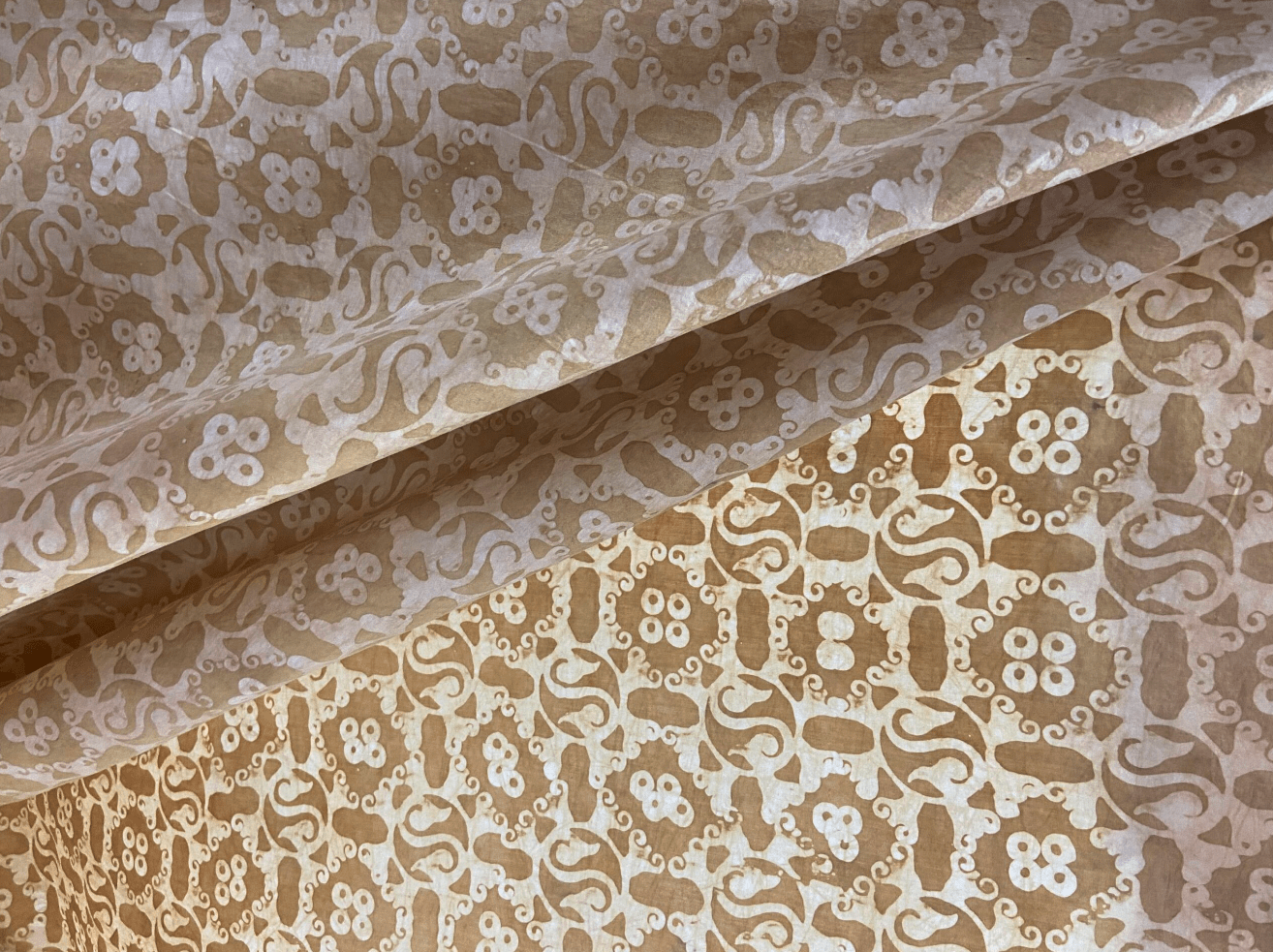
Ms. Natchana Nuanyang, Mr. Nawatthakorn Umasin, Asst. Prof. Noptchanok Kwansanga and Asst. Prof. Tawan Tonyalae
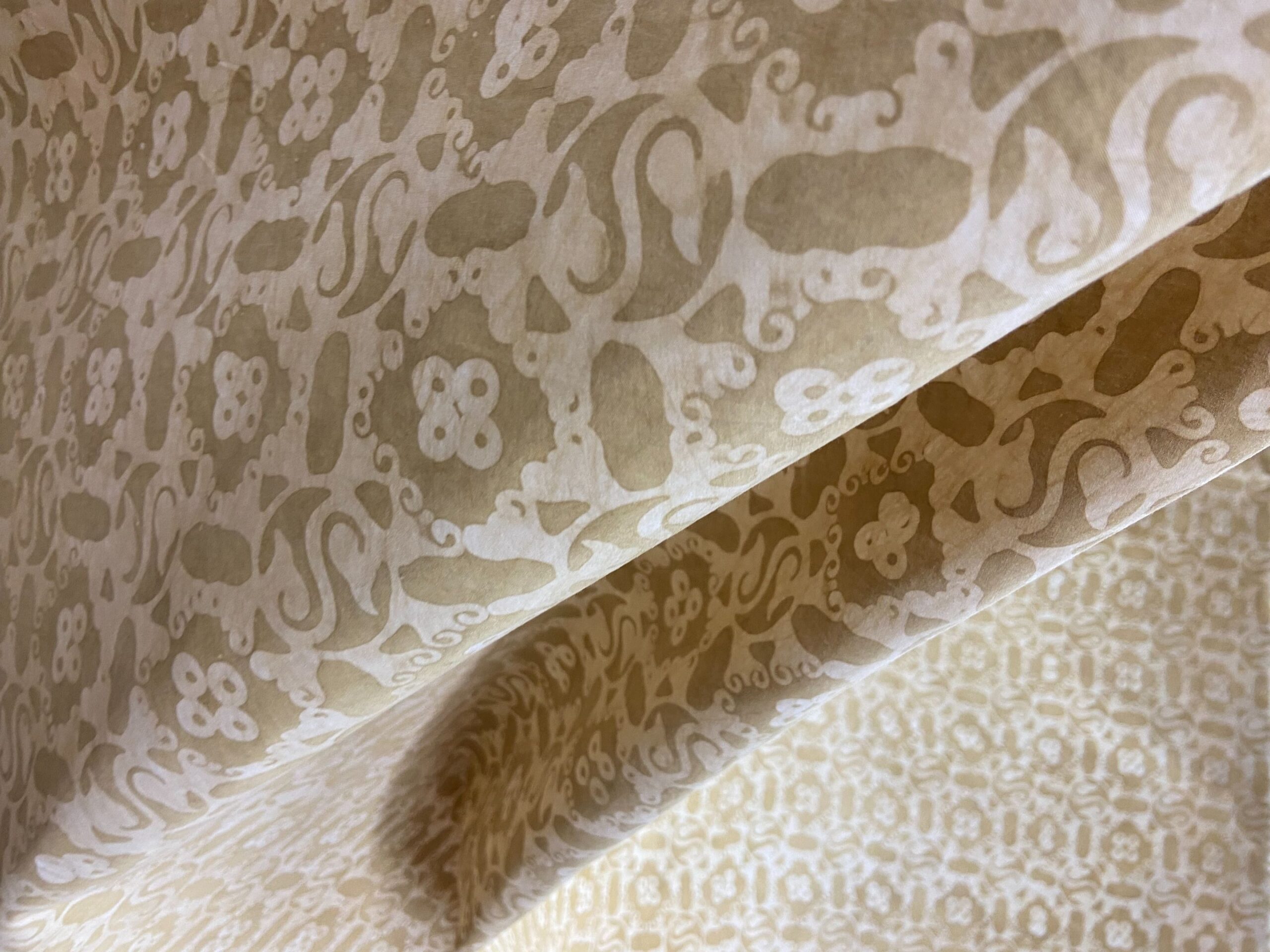
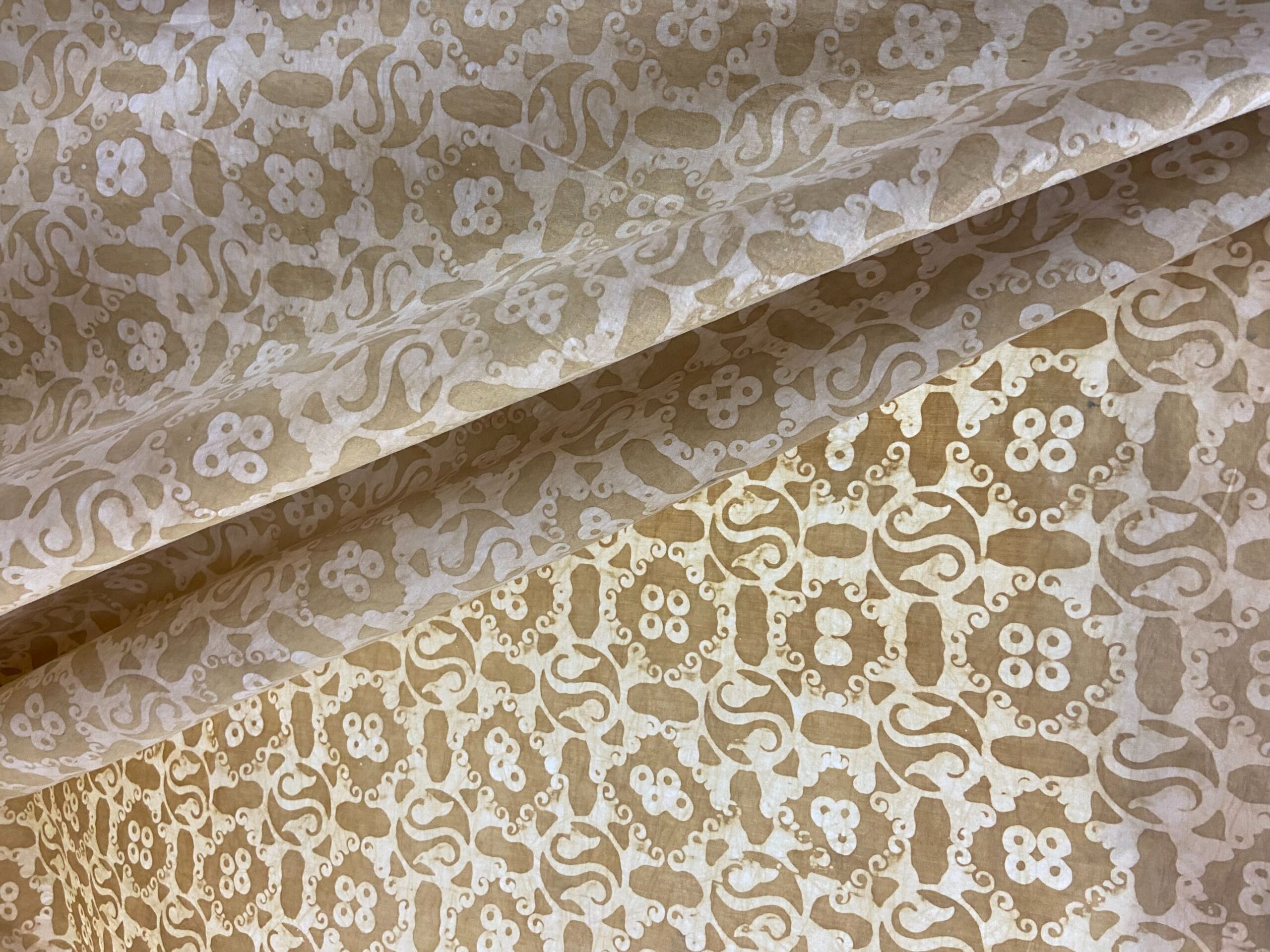
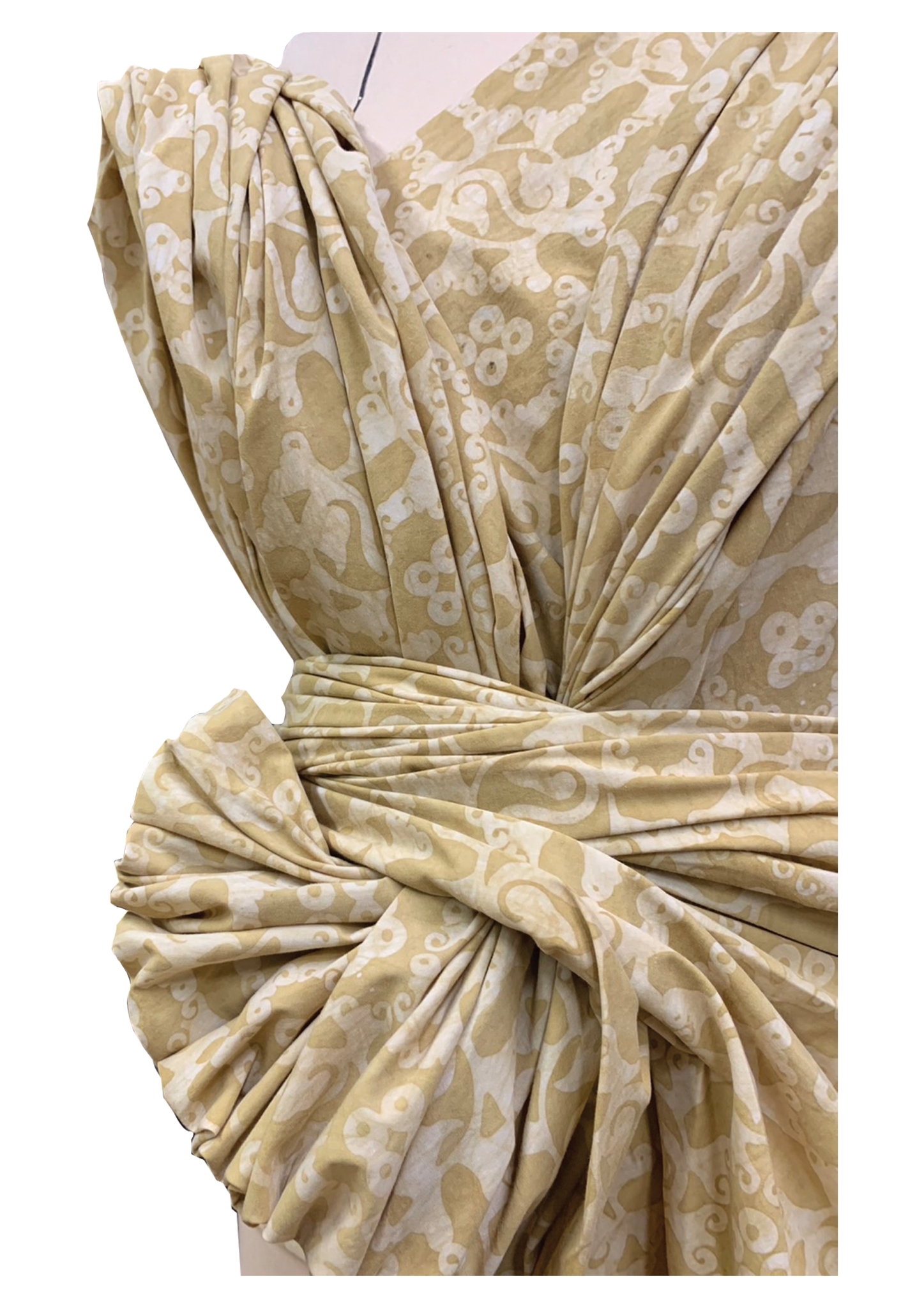
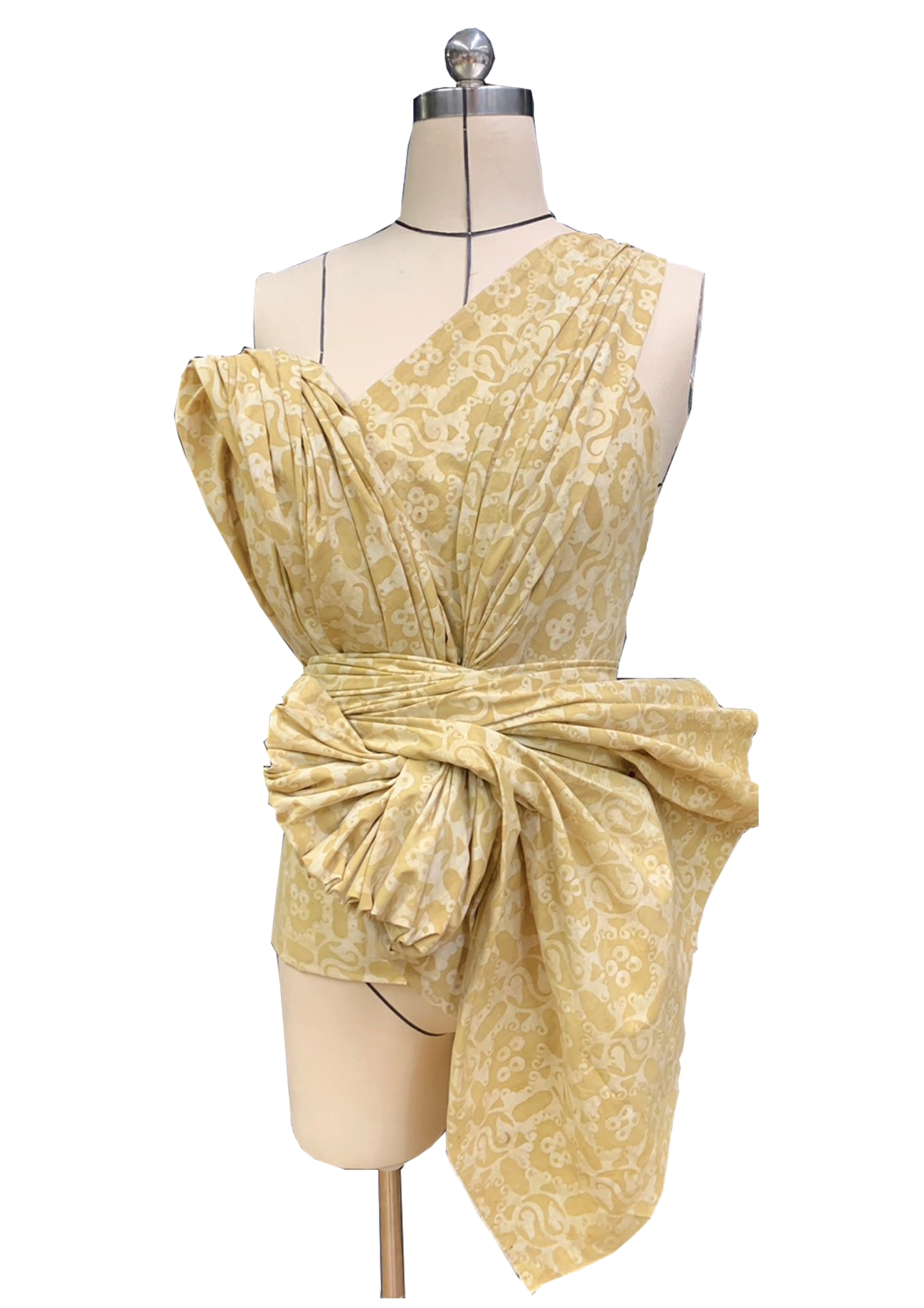
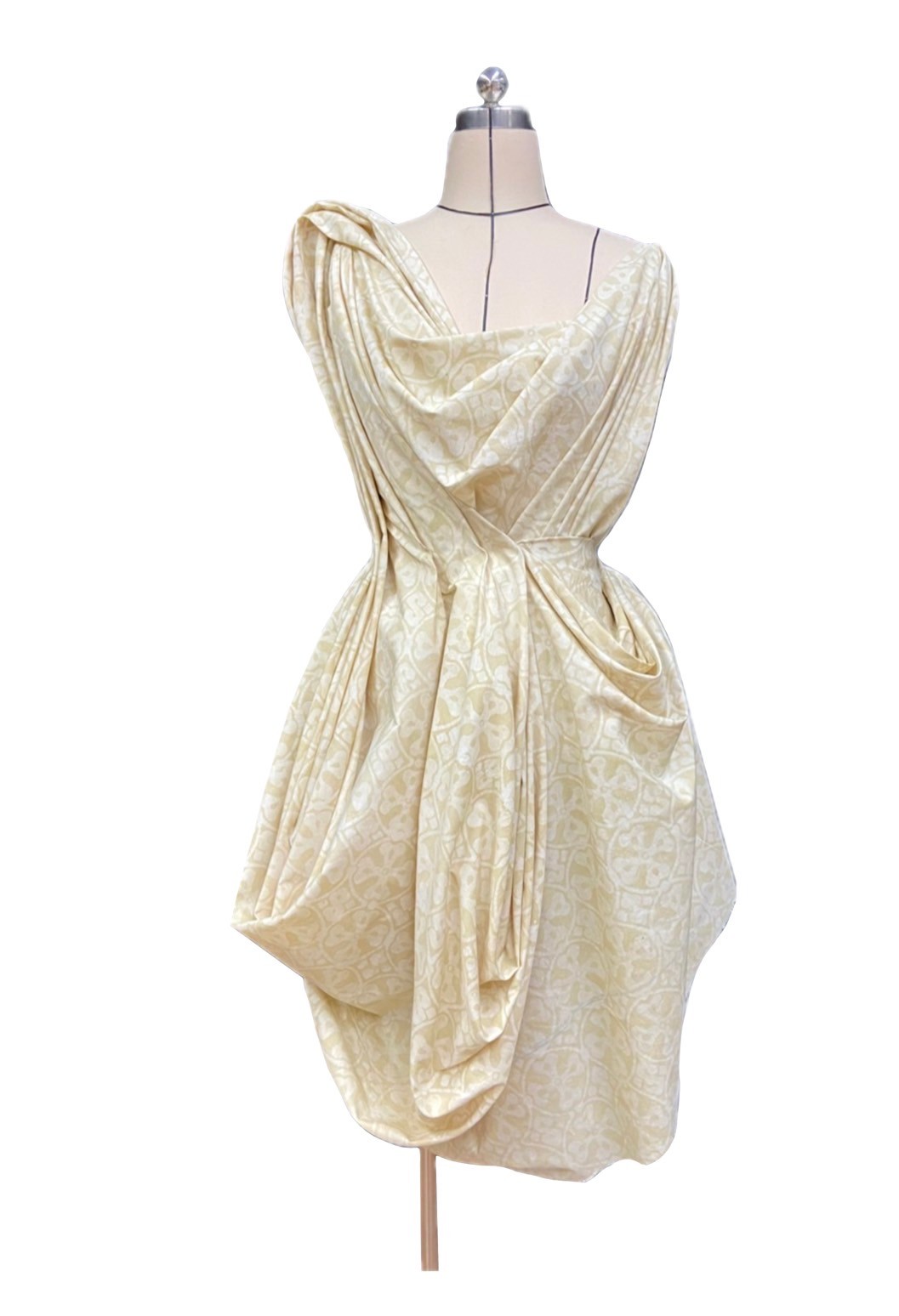
Abstract :
Project Title Creation of Natural-Dyed Batik Through Application of Royal Pattern “Dok Rak Ratchakanya”
The work, Creation of Natural-Dyed Batik Through Application of Royal Pattern “Dok Rak Ratchakanya” aims to 1) examine the natural dyeing process for batik, 2) examine and analyze dye extraction from local plants, and to conserve the wisdom, knowledge, skills, and beliefs about batik creation that leads to development and experiment to generate socioeconomic value for the community. In the book “Batik Model” by the Department of Community Development, the word “Batik” or “Batek” is Javanese for “writing” and “point” reflecting the use of wax for color separation and dyeing to create patterns. The culture of batik has spread worldwide, but the batik originates from Southeast Asia, namely in Indonesia, and later spread to other lands including Thailand. During the reign of King Rama V, the Siamese king made diplomatic contacts with Indonesia and became interested in batik weaving, and thus Thailand received influence from Indonesia about batik that came to the Southern Thai border provinces through trade and religion. Thai Muslims learned how to make batik for household uses and on an industrial scale. The pattern used in the batik is the “Dok Rak Ratchakanya” designed by Princess Sirivannavari Nariratana Rajakanya as she studied the local Southern patterns and mixed them with the “dok rak” pattern that expressed love and motivation. The Dok Rak Ratchakanya pattern was granted as a model pattern for persons interested in continuing and expanding local wisdom and handicrafts. In the dyeing process, the creator used natural dyes such as Indian diamonds, banana peels, and indigo which were abundant in the area. In addition, using natural dyes is more eco-friendly and safer for the manufacturers, consumers, and the environment.
Objectives :
- Examine the creation of natural-dyed batik.
- Examine and analyze the dye extraction from local plants.
The work: Creation of Natural-Dyed Batik Through Application of Royal Pattern “Dok Rak Ratchakanya”, has the purpose to 1) examine the creation of natural-dyed batik and 2) examine and analyze the dye extraction from local plants. In addition, this work aims to conserve the wisdom and knowledge of those interested in designing patterns and integrating knowledge with other subjects in the Fashion and Textile Design Program and Visual and Design Art Program, Faculty of Architecture, Rajamangala University of Technology Srivijaya, and bequeath the knowledge about making natural-dyed batik through application of royal pattern “Dok Rak Ratchakanya” to interested communities, entrepreneurs and other interested parties.
Conceptual Framework :
1) Examine supportive data in creating work about batik dyeing and studying the interpretation of the Dok Rak Ratchakanya pattern identity.
2) The natural-dyed fabric creation process
3) Create the creative work to improve dye adhesion.
4) Analysis of creative work.
5) Conclude the performance of creative work creation and work dissemination.
Process / Methodology :
Step 1 Preliminary Study
Study the concepts and theories, and explore relevant literature.
Step 2 Data Collection
2.1 Set the scope for data collection and have experts examine the information, as well as the design works and stakeholders in the creative work.
2.2 Collect and analyze data obtained from stakeholder interviews.
Step 3 Creation of Natural-Dyed Batik Through Application of Royal Pattern “Dok Rak Ratchakanya”
3.1 Create the work by starting from an appropriate designing process based on the creative work theories.
3.2 Experiment and analyze the design trend, color details and major components.
3.3 Conclude, discuss, and make suggestions after creating and displaying the work to assess the satisfaction level towards the creative work, and prepare for future creation.
Techniques and Materials :
– Porcelain or stainless vessel (aluminum or metal materials are avoided because of dye discoloration problem)
– Dyeing pot (the size should be appropriate for the fabric size)
– Stirring stick that is sufficiently large for the fabric in the dyeing pot.
– Rubber gloves / A holed basket for filtering dye scraps / a colander for scooping
– A sheet of thin muslin cloth for filtering out the natural dye water.
– A plastic tub or bucket for washing.
– A stove (wood-fired or gas)
The work was created using vegetable dyes, which are deemed a natural dye. The bark, trunk, and leaves of Indian diamond, and ripe banana peels were cold-boiled and fermented in the dying pot.
Techniques and process
Step 1 Wash the fabric to remove all the dirt and debris, allowing better dye absorption.
Step 2 Extract the dye from the Indian diamond leaves and banana peels by boiling and chopping, and then simmering for 1-3 hours using high to moderate fire (Observe the change in the raw materials’ colors, and the extracted water should be slightly viscous)
Step 3 The boiled dye water is then filtered to remove all the scraps, then add the table salt to increase concentration and improve absorption.
Step 4 The fabric that is masked with candlewax is then fermented in the dyeing pot, and changes in the fabric color are observed. This step takes around 16 hours
Step 5 The fermented fabric is then immersed in the mordant, such as table salt that will allow better dye adhesion to the fabric, and alum that also helps with dye adhesion and color. Alum is usually used with yellow-green dye. Finally, the limewater will help with dye adhesion and coloring, and is usually used with brown dyes.
Step 6 After immersing in the mordant, wash the fabric and air-dry to complete the dyeing process.
Result / Conclusion :
The creation of natural-dyed fabric through the application of the royal “Dok Rak Ratchakanya” pattern is the use of abundant local plants that were deemed agricultural scraps in the community in the process of batik creation, which could be useful and valuable for the community. Furthermore, the author desires to improve the adhesion of dye to the fabric, as well as durability against washing to extend the fabric life and continue the batik wisdom for younger people and other interested parties to expand the Thai-made batik into a contribution to economic value.
References :
Ankhana Thianklam. (2006). A Study on Botanical characteristics of Indigo plant (Indigofera tinctoria L.) concerning its leaf yields, colour quantity and dry dye. Sakon Nakhon : Faculty of Agricultural Technology. Sakon Nakhon Rajabhat University.
Atcharaporn Sailasoot. (1984). Dyeing Manual (2nd print). Bangkok : Technique 19 Printing.
Phanwadee Srikhao, Pokkasin Chathiphod and Nilobon Phuraya. (2017). Cultural Commonalities and Creation of Socioeconomic Values of Indigo-dyed Fabric in Phannakihom District, Sakon Nakhon Province. Sakon Nakhon : Sakon Nakhon Rajabhat University
Anurat Saithong and Phuwadon Sritharet. (2015). Types of Indigo-dyed Fabric and Indigo Dyeing Process of Tai People in Thailand, Lao People’s Republic and Socialist Republic of Vietnam
Siriphorn Boonchoo, and Nanthawan Rakphong. (2014). Wisdom of Traditional Silk Weaving in Ban Somphornrat, Nong Sano Subdistrict, Buntharik District, Ubon Ratchathani Province. Local Information Section, Academic Service Office, Ubon Ratchathani Province : 2014
Online References
Department of Community Development, Ministry of Interior. (2023). Color Creation. retrieved from https://www.thailandotop.org/flipbook/?r3
Department of Community Development, Ministry of Interior. (2023).Donkoi Model. retrieved from https://donkoimodel.com/wp/?r3d=flipbook
Department of Community Development, Ministry of Interior. (2023).Batik Model. retrieved from https://thailandotop.org/batik-model